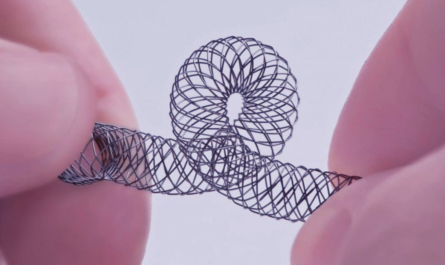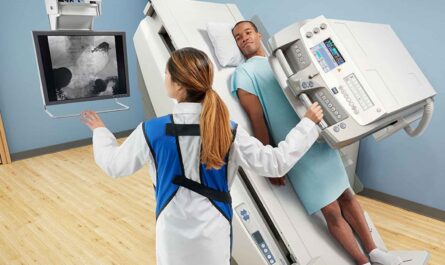What is Wet Macular Degeneration?
Wet macular degeneration, also known as neovascular macular degeneration or AMD, is a medical condition mainly affecting older adults. It involves the growth of abnormal blood vessels in the macula, the central area of the retina. The macula is responsible for sharp, central vision that is needed for activities like reading, driving, and recognizing faces. When the macula is damaged by these diseased blood vessels, it causes a distortion of central vision and loss of reading ability and facial recognition.
Causes and Risk Factors of Wet AMD
The exact cause of wet AMD is unknown, but age and genetics play a major role. Other risk factors include smoking, obesity, high blood pressure, high cholesterol levels and a family history of AMD. As we age, the retina’s macula starts slowly breaking down over many years due to thinning of the normal tissues in this region. This thinning opens the way for abnormal vessel growth. These new fragile blood vessels leak fluids and blood into the macula, resulting in blurring of central vision. If left untreated, wet AMD can progress rapidly and lead to severe, irreversible vision loss.
Symptoms of Wet AMD
Verteporfin primary symptom of wet AMD is blurred or distorted central vision in one or both eyes. Sometimes patients also report symptoms like dark or empty areas in the central vision, straight lines appearing wavy, or seeing letters and objects smaller than normal size. Initially, the symptoms may be mild and non-disruptive to daily life. However, wet AMD develops rapidly and without treatment, central vision can worsen significantly within a few months. Severe vision loss can make activities like driving, reading and recognizing faces very difficult.
Diagnosis and Treatment Options
Diagnosis of wet AMD involves a dilated comprehensive eye exam by an ophthalmologist along with imaging tests like fluorescein angiography and optical coherence tomography. These tests help identify abnormal vessel growth in the macula area.
For many years, only laser photocoagulation therapy was available to treat wet AMD. This involved applying laser burns around the leaking blood vessels in the macula to seal them off. However, its benefits were modest and it caused permanent vision loss.
In 2000, the FDA approved Visudyne photodynamic therapy (PDT) as the first effective treatment for wet AMD. Visudyne therapy works through a chemical reaction. An infusion of the light-activated drug Visudyne is given intravenously. Within 15 minutes, it accumulates selectively in the abnormal vessels in the macula. Then, low-intensity non-thermal laser light is precisely targeted at these vessels. When light activates Visudyne, it causes temporary closure of the leaking blood vessels without damaging the surrounding retina tissues. This slows disease progression and improves vision. Multiple treatments may be required at intervals to maintain the benefits.
How Does Verteporfin Work?
Verteporfin (trade name Visudyne) is a light-activated drug known as a photosensitizer. Its precise mechanism of action involves:
– After intravenous administration, Visudyne rapidly accumulates in neovascular vessels but not normal retinal vessels.
– Within 15 minutes, it reaches peak levels in the targeted abnormal vessels in the macula region.
– These vessels are then exposed to low-intensity non-thermal laser light from a photodynamic therapy device for 83 seconds.
– When activated by this red light, Visudyne produces a photochemical reaction generating singlet oxygen and other reactive oxygen species.
– This results in localized damage to the endothelial cells lining the new blood vessels without harming surrounding retinal tissues.
– The damaged vessels then become temporarily blocked through coagulation, restricting blood flow and leakage into the macula.
– Over 2-3 months, the abnormal vessels regress through natural processes as vision is stabilized and preserved.
Benefits of Visudyne Therapy
Several landmark clinical trials have established the significant benefits of using Visudyne PDT to treat wet AMD:
– TAP and VIP trials showed Visudyne reduced the risk of severe vision loss by 50% at 24 months compared to conventional laser therapy.
– VISION trials found over 94% of patients maintained vision or experienced less than 3 lines of vision loss at 24 months, compared to only 60% with placebo.
– Treatment slowed disease progression and stabilized vision for 2 years or more in around 90% of patients.
– Real-world studies confirmed PDT stabilized or improved vision in 75-80% of cases at 12-18 months with quarterly treatments.
– Visudyne well-tolerated with rare side effects like injection site pain or photosensitivity for 48 hours post-treatment.
– Combined with anti-VEGF injections, PDT provides additional protection against vision loss in some patients.
verteporfin photodynamic therapy revolutionized wet AMD treatment by offering the first safe and reasonably effective option to preserve vision and inhibit disease progression. It remains a key treatment modality in slowing vision loss even in the current era of anti-VEGF medications. With prompt diagnosis and regular PDT or combination therapy, most patients can maintain functional eyesight for many years.
*Note:
1. Source: Coherent Market Insights, Public sources, Desk research
2. We have leveraged AI tools to mine information and compile it




